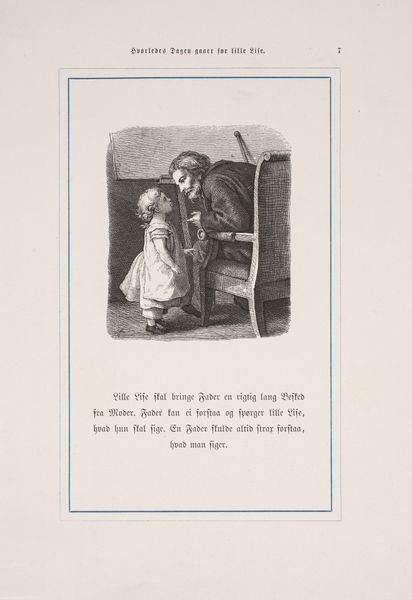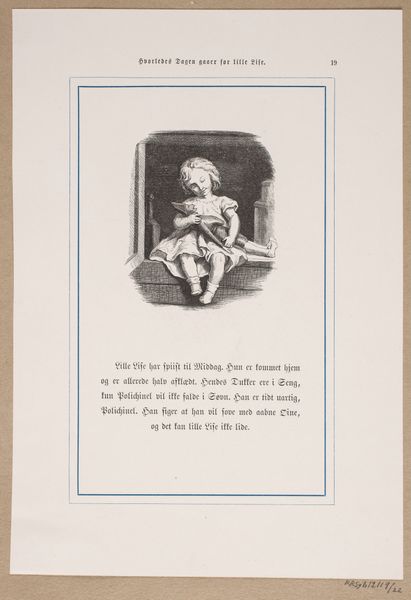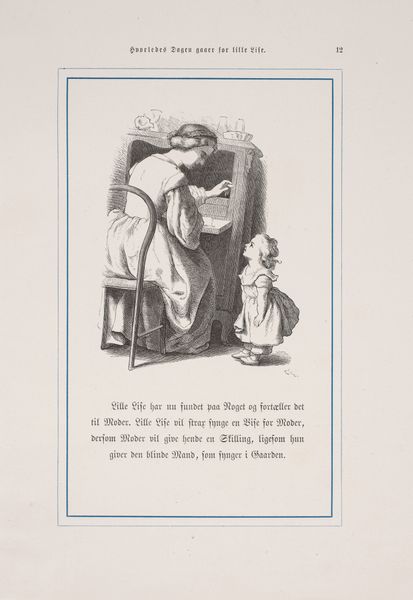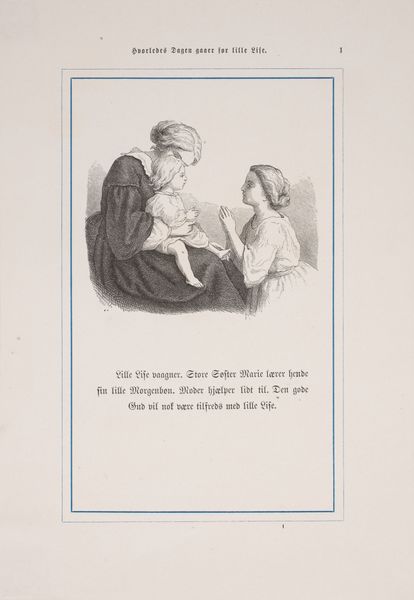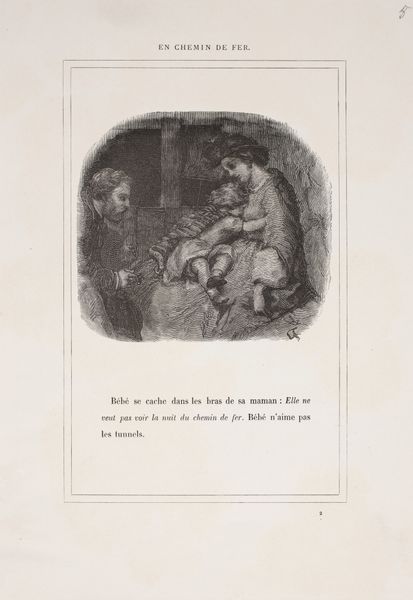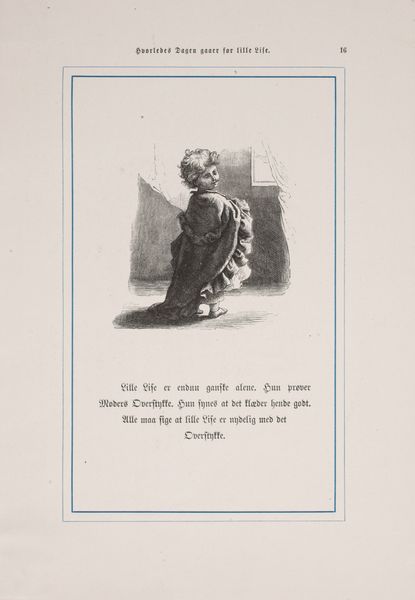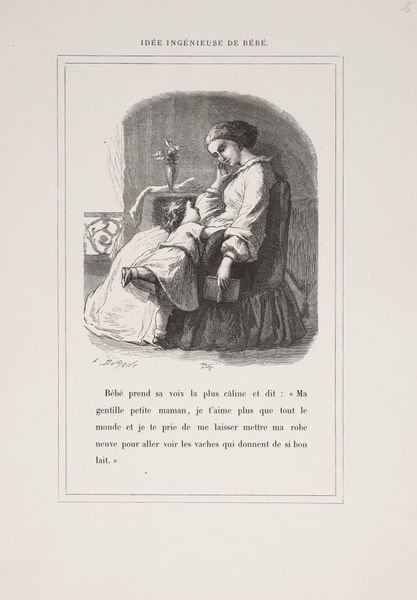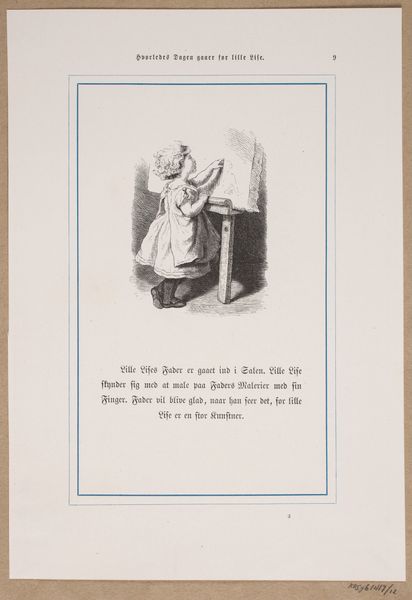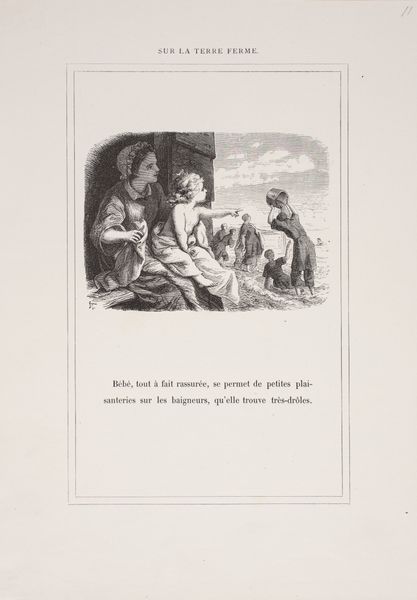
Illustration til "Hvorledes Dagen gaaer for Lille Lise" 1863
0:00
0:00
Dimensions: 271 mm (height) x 187 mm (width) (bladmaal)
Curator: Immediately, a sense of quiet contemplation washes over me. The soft greyscale and intimate scene exude a tranquil mood. Editor: It’s a charming scene. We’re looking at Lorenz Frølich's "Illustration til 'Hvorledes Dagen gaaer for Lille Lise,'" a woodcut on paper created in 1863. Frølich was a Danish painter, illustrator, graphic artist and etcher. Curator: Ah, I see the clear echoes of Romanticism in Frølich’s rendering. A single child amidst large stacks of books, the quill symbolic of the literary world she will soon conquer. Notice how she is surrounded by knowledge and history. There's something archetypal about it. Editor: It’s also deeply rooted in its time. Representations of childhood, particularly girls, were increasingly sentimental and idealized. Look at her almost angelic presentation, surrounded by objects indicating knowledge and perhaps class privilege, during an era of significant social stratification and growing calls for public education. I am wary of how Romanticism elides a more complicated picture of the period. Curator: An important caveat! Yet the quill and surrounding books create this visual narrative of the child’s world, her potential, her symbolic journey, that is immediately relatable across contexts. Don’t you agree? Editor: Undoubtedly. The images become ciphers of broader, more problematic ideological projects in 19th-century European culture, and reveal just how invested artists and illustrators were in maintaining systems of social order, even while imbuing their representations with symbolic potency. Curator: It’s an eloquent example of how the same image, with the passage of time, holds diverse emotional weight for audiences from radically different sociocultural vantage points. It allows us to trace collective cultural continuity… and the shifts that naturally emerge from historical revisionism. Editor: Exactly. Even a seemingly gentle scene like this bears traces of deeper systemic issues. Looking through that lens encourages us to constantly question inherited aesthetic values and probe the ideologies that often operate just beneath the surface of visual culture. Curator: A perfect point on which to conclude, drawing together both personal impressions and analytical considerations of this illustration’s enduring presence today. Editor: Indeed, a small work with expansive historical resonances.
Comments
No comments
Be the first to comment and join the conversation on the ultimate creative platform.
